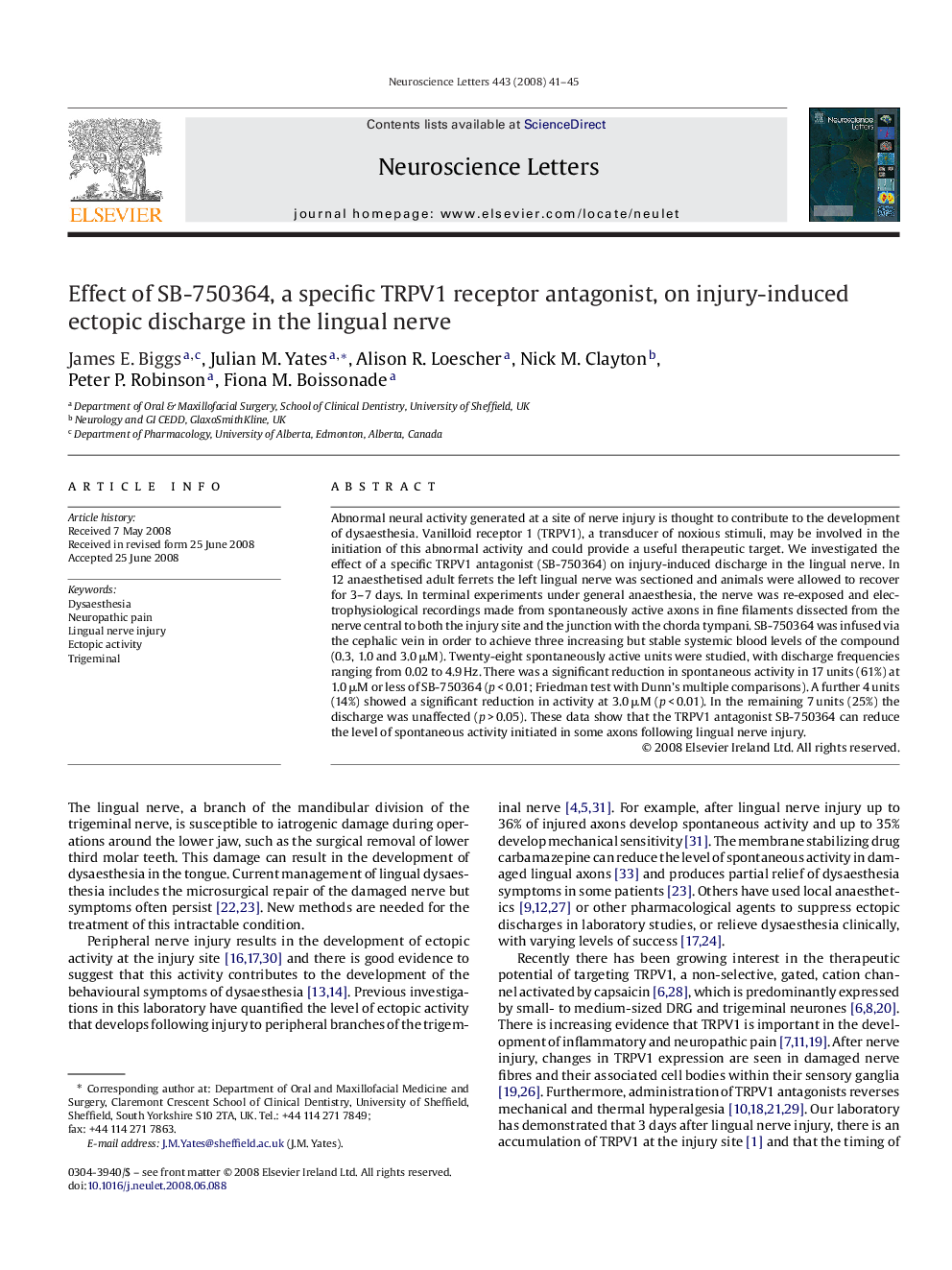| Article ID | Journal | Published Year | Pages | File Type |
|---|---|---|---|---|
| 4347867 | Neuroscience Letters | 2008 | 5 Pages |
Abnormal neural activity generated at a site of nerve injury is thought to contribute to the development of dysaesthesia. Vanilloid receptor 1 (TRPV1), a transducer of noxious stimuli, may be involved in the initiation of this abnormal activity and could provide a useful therapeutic target. We investigated the effect of a specific TRPV1 antagonist (SB-750364) on injury-induced discharge in the lingual nerve. In 12 anaesthetised adult ferrets the left lingual nerve was sectioned and animals were allowed to recover for 3–7 days. In terminal experiments under general anaesthesia, the nerve was re-exposed and electrophysiological recordings made from spontaneously active axons in fine filaments dissected from the nerve central to both the injury site and the junction with the chorda tympani. SB-750364 was infused via the cephalic vein in order to achieve three increasing but stable systemic blood levels of the compound (0.3, 1.0 and 3.0 μM). Twenty-eight spontaneously active units were studied, with discharge frequencies ranging from 0.02 to 4.9 Hz. There was a significant reduction in spontaneous activity in 17 units (61%) at 1.0 μM or less of SB-750364 (p < 0.01; Friedman test with Dunn's multiple comparisons). A further 4 units (14%) showed a significant reduction in activity at 3.0 μM (p < 0.01). In the remaining 7 units (25%) the discharge was unaffected (p > 0.05). These data show that the TRPV1 antagonist SB-750364 can reduce the level of spontaneous activity initiated in some axons following lingual nerve injury.
